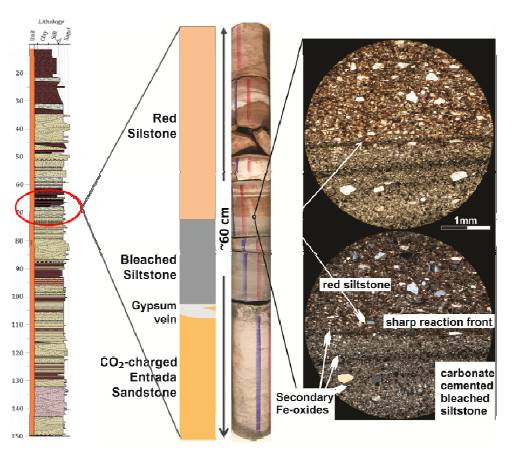Words on Wednesday aims at promoting interesting/fun/exciting publications on topics related to Energy, Resources and the Environment. If you would like to be featured on WoW, please send us a link of the paper, or your own post, at ERE.Matters@gmail.com.
If you are interested in today’s WoW, some of the results will be presented during the EGU in session ERE5.2 Field methods and analysis of field data for CO2 geological storage, on Thursday at 15.30h in room R8. So go check it out! 🙂
***
Busch, A. Kampman, N. Hangx, S.J.T., Snippe, J., Bickle, M. Bertier, P., Chapman, H., Spiers, C.J., Pijnenburg, R.Samuelson, J. Evans, J.P., Maskell, A., Nicholl, J., Pipich, V., Di, Z., Rother, G., Schaller, M., 2014. The Green River Natural Analogue as a field laboratory to study the long-term faith of CO2 in the subsurface. Energy Procedia 63, 2821-2830.
Abstract:
Understanding the long-term response of CO2 injected into porous reservoirs is one of the most important aspects to demonstrate safe and permanent storage. In order to provide quantitative constraints on the long-term impacts of CO2-charged fluids on the integrity of reservoir-caprock systems we recovered some 300m of core from a scientific drill hole through a natural CO2 reservoir, near Green River, Utah. We obtained geomechanical, mineralogical, geochemical, petrophysical and mineralogical laboratory data along the entire length of the core and from non CO2-charged control samples. Furthermore, we performed more detailed studies through portions of low permeability layers in direct contact with CO2-charged layers. This was done to constrain the nature and penetration depths of CO2-promoted fluid-mineral reaction fronts. The major reactions identified include the dissolution of diagenetic dolomite cements and hematite grain coatings, and the precipitation of ankerite and pyrite and have been used as input for geochemical 1D reactive transport modelling, to constrain the magnitude and velocity of the mineral-fluid reaction front.
In addition, we compared geomechanical data from the CO2-exposed core and related unreacted control samples to assess the mechanical stability of reservoir and seal rocks in a CO2 storage complex following mineral dissolution and precipitation for thousands of years. The obtained mechanical parameters were coupled to mineralogy and porosity. Key aim of this work was to better quantify the effect of long-term chemical CO2/brine/rock interactions on the mechanical strength and elastic properties of the studied formations.

